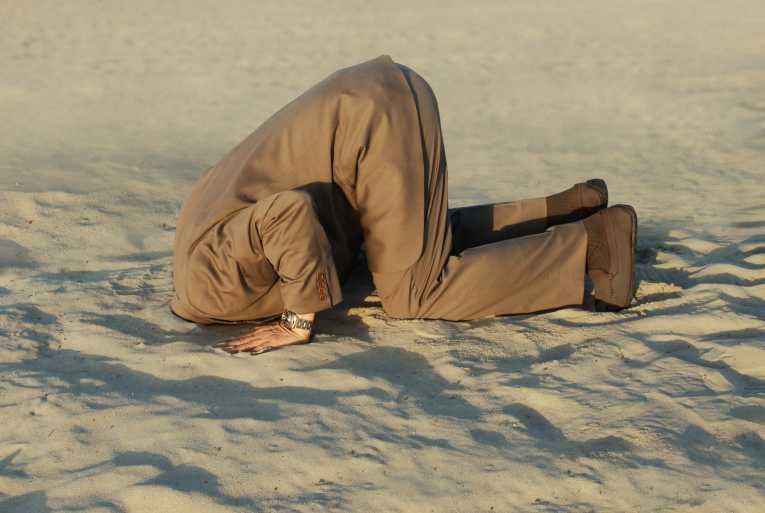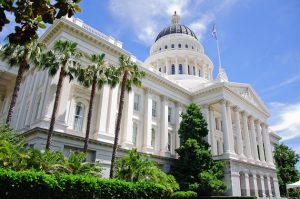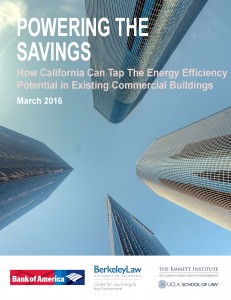California is on track to meet its 2020 climate change goals, to reduce emissions by that year back to 1990 levels. Much of that success is due to the economic recession back in 2008 and significant progress reducing emissions from the electricity sector, due to the growth in renewables.
 But the state is lagging in one key respect: transportation emissions. Bloomberg reported on the emissions data compiled by the nonpartisan research institute Next 10:
But the state is lagging in one key respect: transportation emissions. Bloomberg reported on the emissions data compiled by the nonpartisan research institute Next 10:
In 2015, the most recent year for which data are available, the state’s greenhouse gas emissions dropped at less than half the rate of the previous year, according to an August report from the San Francisco-based nonprofit Next 10. Low gas prices and a lack of affordable housing prompted more driving and contributed to a 3.1 percent increase in exhaust from cars, buses, and trucks, the report says. Census data show that more than 635,000 California workers had commutes of 90 minutes or more in 2015, a 40 percent jump from 2010.
The solutions are urgent: we need to reduce driving miles by building all of our new housing (an estimated 180,000 units needed per year) near transit, and we need to electrify our existing vehicle fleet and add in biofuels and hydrogen where appropriate. Otherwise, the state will not be as successful in meeting its much more aggressive climate goals for 2030, with a 40% reduction below 1990 levels called for that year.
 Sean Illing in Vox.com conducted a fascinating interview with Steven Sloman, a professor of cognitive science at Brown University, about how we arrive at the conclusions we do. In short, the process (and outcomes) are not pretty, as Dr. Sloman relates:
Sean Illing in Vox.com conducted a fascinating interview with Steven Sloman, a professor of cognitive science at Brown University, about how we arrive at the conclusions we do. In short, the process (and outcomes) are not pretty, as Dr. Sloman relates:
I really do believe that our attitudes are shaped much more by our social groups than they are by facts on the ground. We are not great reasoners. Most people don’t like to think at all, or like to think as little as possible. And by most, I mean roughly 70 percent of the population. Even the rest seem to devote a lot of their resources to justifying beliefs that they want to hold, as opposed to forming credible beliefs based only on fact.
Think about if you were to utter a fact that contradicted the opinions of the majority of those in your social group. You pay a price for that. If I said I voted for Trump, most of my academic colleagues would think I’m crazy. They wouldn’t want to talk to me. That’s how social pressure influences our epistemological commitments, and it often does it in imperceptible ways.
He concludes that if the people around us are wrong about something, there’s a good chance we will be too. Proximity to truth compounds in the same way. And the phenomenon isn’t a partisan problem; it’s a human problem on all sides of political debates.
In some ways, it’s understandable how this dynamic arose in our species. There’s no way one brain can master all topics, so we have to depend on other people to do some thinking for us. This is a perfectly rational response to our condition. It also may explain why traditional societies often relied on a few religious leaders to make a lot of the key decisions for a society that would rather not have to think too hard about broader societal problems and instead focus on problem-solving in their own immediate lives. The problem though becomes when our beliefs support ideas or policies that are totally unjustified.
So are we doomed to a fate of group-think with the risk of unsupportable beliefs? Dr. Sloman doesn’t think so, noting that some professions train people not to fall into this trap:
People who are more reflective are less susceptible to the illusion. There are some simple questions you can use to measure reflectivity. They tend to have this form: How many animals of each kind did Moses load onto the ark? Most people say two, but more reflective people say zero. (It was Noah, not Moses who built the ark.)
The trick is to not only come to a conclusion, but to verify that conclusion. There are many communities that encourage verification (e.g., scientific, forensic, medical, judicial communities). You just need one person to say, “are you sure?” and for everyone else to care about the justification. There’s no reason that every community could not adopt these kinds of norms. The problem of course is that there’s a strong compulsion to make people feel good by telling them what they want to hear, and for everyone to agree. That’s largely what gives us a sense of identity. There’s a strong tension here.
He’s also pioneering some research on ways to reframe political-type conversations from a focus on what people value to one about actual consequences. As he notes, “when you talk about actual consequences, you’re forced into the weeds of what’s actually happening, which is a diversion from our normal focus on our feelings and what’s going on in our heads.”
This work could contribute to a better understanding about public perceptions around climate change. For example, the denial of basic climate science can certainly be attributed to group-think. But as Sloman posits, reframing the messaging from the science to the outcomes of climate mitigation (such as a cleaner world, less dependence on extractive industries for fuel) might open more in the middle to taking action. We could also focus on training the next generation to be more open-minded on evidence and arguments, as with the scientific, medical and judicial fields.
But just being aware of our mental processing of information and beliefs is a good start to addressing the problem of when those processes take us in the wrong direction.
It’s a recurring knock on clean technologies like solar PV and wind turbines. Critics like to argue that the metals and mineral extraction to make them entail exactly the kind of pollution – and sometimes political conflicts – that clean tech advocates hope to displace in the current fossil fuel supply chain.
We should be clear that we’re starting from a terrible baseline: the geopolitical negatives and pollution from the current regime of oil extraction, coal mining, and natural gas infrastructure dwarfs the likely risks and environmental footprint of producing most clean technology like solar PV and wind turbines.
But at the same time, it’s an area of legitimate concern and one that probably should be addressed at this relatively early stage in clean tech deployment, when advocates of better governance and pollution controls have potentially more leverage over the source countries and states.
Alex Tilley and David Manley of Natural Resource Governance Institute (NRGI) explore the environmental and political footprint of the clean tech supply chain in a recent blog post and accompanying report. The researchers based their analysis on a World Bank report on various clean technologies and the minerals and metals needed to manufacture them, down to country-level data for the various commodities. They then ran the data against the 2017 Resource Governance Index (RGI) scoring:
[We] found that across the different minerals, on average 42 percent of reserves are in countries with “good” or “satisfactory” resource governance, 37 percent are in countries with “weak” scores (China accounts for 14 percent of this total) and a further 7 percent are in countries that score “poor.” Almost none of the reserves are in countries that are “failing” in their resource governance.
The outlook also presents some serious risks. A high average proportion of minerals reserves is found in countries with “weak” or “poor” governance and for some of the individual minerals, this proportion is much higher.
For example, 90 percent of the reserves of chromium, a mineral used in wind turbines, are in Kazakhstan and South Africa, two countries with “weak” RGI scores. Almost two-thirds of reserves of manganese, used in both wind turbines and lithium-ion batteries, are in countries that score “weak” or “poor” in the index—32 percent in South Africa, 23 percent in Ukraine, 7 percent in China, 4 percent in Gabon and 2 percent in Ghana.
The problems that could ensue from resource extraction in these “weaker” countries include worsening corruption, over-reliance on a single extractive industry, more political conflicts over resources, and local pollution of forests, rivers, and coastlines. For project developers, these impacts could result in delays and project cancellations.
The authors cite some potential solutions from a Nature article for the international community to consider:
Because avoiding disruption is so crucial for the progress of clean technologies, the group of experts writing in Nature propose a global governance approach to avert potential bottlenecks. They call for the international community to set targets for mineral production; map resources; monitor impacts; research and invest in new extractive technologies; and carry out exploration in new frontiers, from sea beds to deep in the earth’s crust. Additionally, they propose an early warning system, using data analysis to trigger alarms for impending supply, governance and environmental concerns.
The upside for the residents of these countries, if the extraction processes are sound with respect to governance and environmental impacts, is rising standards of living and potential growth of a more diversified, open and tolerant economy. The downside though is unfortunately all too possible, unless the international community and clean tech industry mobilize for coordinated policy action.
California’s 2030 climate goals will be a big step forward for the state. We’re already making good progress achieving our 2020 goals (to return to 1990 levels of carbon emissions), with the state likely to hit that goal a bit early thanks to the global recession and the plummeting price of renewables. But the 2030 goals require an additional 5% reduction per year in emissions for the 2020s, to reduce our levels 40% below 1990 emissions. That’s a tall order.
Electric utilities will be a big part of the solution, but not just because of their efforts to decarbonize the electricity supply. They’re also needed to expand the kinds of things that can run on electricity instead of petroleum or natural gas.
Southern California Edison makes that case and puts numbers behind it, in a recent white paper the utility commissioned, per E&E news:
SCE used an analysis from the consulting firm E3 that found the cheapest of three pathways to meeting the state’s 2030 emissions goals entails electrifying 24 percent of light-duty vehicles and 15 percent of medium-duty vehicles, in addition to reaching an 80 percent carbon-free electricity target. It also would require 30 percent of residential and commercial water and space heaters to run on electricity rather than gas.
This pathway seems achievable at a reasonable cost, given the advances in battery technologies on the vehicle side. Still, we will need to keep the federal tax credit in place or find a viable substitute to keep demand for EVs strong in the short run.
On the furnace and water heating side, we’ll need some new, cheaper products to wean buildings off of natural gas and onto clean electricity. But the good news is that achieving the 80% carbon-free electricity goal by 2030 may not be so daunting, given that we may be on track for 60% renewables by 2030 anyway, plus all the large hydropower that doesn’t count under the renewables mandate.
As always with the future, there are plenty of variables and unknowns. But California’s progress to date on clean tech gives us a clear idea of what’s needed — and what the costs may be — to achieve the 2030 goals.
 The Navajo Generating Station (NGS) is a massive coal-fired power plant. It is the country’s eighth-largest greenhouse gas polluter, at 16 million metric tons of carbon dioxide emissions (and hundreds of pounds of mercury and arsenic) each year.
The Navajo Generating Station (NGS) is a massive coal-fired power plant. It is the country’s eighth-largest greenhouse gas polluter, at 16 million metric tons of carbon dioxide emissions (and hundreds of pounds of mercury and arsenic) each year.
But as I blogged earlier, it’s also the economic lifeblood for one of the most impoverished regions in the country, for the Navajo and Hopi Tribes. The plant is responsible for 3,000 jobs, and the Hopi Tribe alone receives $13 million annually, representing an astonishing 85 percent of the tribe’s yearly revenue.
Bloomberg reports on the economic challenge facing these communities with the impending closure:
It’s unquestionable that closing NGS is the best possible outcome for the land the Navajo and their neighbors, the Hopi, have called home for more than 800 years. It’s also unquestionable that closing NGS presents an existential threat to both tribes. Once the work of winding down operations is said and done, “some will say, ‘I have no choice but to make a life off the reservation,’” says Hopi Chairman Herman Honanie. “That is very likely, and something that we, as parents and tribal leaders, especially for younger people, may have to really encourage.” After centuries of fighting against both men and laws, it’s market forces that have brought them to this breaking point. “I think we need to reach deep down inside ourselves and ask how we want to survive as a people,” he says.
These communities don’t have a lot of other economic options, but it’s never a winning long-term strategy to be so totally dependent on one economic source. Like many rural communities across this country, they’re going to have to figure out alternative means of surviving economically, and they’re going to have to do so quickly.
So says a new World Wildlife Fund (WWF) report titled “Appetite for Destruction,” profiled in the Guardian:
“The world is consuming more animal protein than it needs and this is having a devastating effect on wildlife,” said Duncan Williamson, WWF food policy manager. “A staggering 60% of global biodiversity loss is down to the food we eat. We know a lot of people are aware that a meat-based diet has an impact on water and land, as well as causing greenhouse gas emissions, but few know the biggest issue of all comes from the crop-based feed the animals eat.”
With 23 [billion] chickens, turkeys, geese, ducks and guinea fowl on the planet – more than three per person – the biggest user of crop-based feed globally is poultry. The second largest, with 30% of the world’s feed in 2009, is the pig industry.
Some studies even indicate that you can make a bigger impact reducing your carbon footprint by avoiding meat consumption than even by driving a hybrid.
Between our preference for meat-heavy diets and tendency to waste food, individual eating habits are making a major impact on the climate and the environment around us.
Now that’s some food for thought.
Food waste is a staggering problem. Researchers estimate that Americans waste 133 billion pounds of food each year. Globally, we waste or lose 1.3 billion tons of food annually. The economic costs are significant: the typical American family spends about $1,500 on food that they throw away, adding up to billions of dollars of waste.
Environmentally, it’s also a huge contributor to climate change. Analysts have documented that food waste leads to 3.3 gigatons [billion tons] of CO2 equivalent emissions, making it the third top emitter of greenhouse gases after the US and China.
One relatively straightforward solution is for the food industry to standardize food labeling. Fortunately, an industry group has agreed to tackle the problem, per NPR. The Consumer Goods Forum is a network of 400 of the largest food and consumer goods companies around the globe (including Walmart, Kellogg, Nestle, Campbell Soup, and Amazon), with a plan to harmonize labels:
These are the two standard phrases that you can expect to see on food packages in the future: “BEST if Used By,” which describes the quality of a food product. This term is meant to convey that “the product may not taste or perform” its best after the specified date, “but it is safe to use or consume,” explains the Food Marketing Institute in this release.
The second term is “Use By,” which applies to highly perishable products. “These products should be consumed by the date listed on the package – and disposed of after that date,” explains the FMI.
This is an important step that will hopefully give consumers more guidance about when to throw out food or not. We’ll still need to tackle other parts of the problem, such as minimizing waste in the fields and at markets, but consumer education is a big need.
If you’d like to hear more about how to reduce food waste, check out this City Visions discussion I hosted in August on KALW FM 91.7.
 The frenzy is over. The California legislature finished its session last week and sent its approved bills onto the governor. Casual observers note the big “victories” on housing:
The frenzy is over. The California legislature finished its session last week and sent its approved bills onto the governor. Casual observers note the big “victories” on housing:
- A supermajority vote to raise fees on real estate documents to fund affordable housing;
- Another supermajority vote to approve a bond measure to go before the voters to fund even more affordable housing;
- A win for SB 35, to streamline local approvals for new housing in cities and counties that aren’t providing enough of it also passed; and
- The “sleeper” AB 1568 (Bloom), which will improves infrastructure financing for infill projects under the acronym NIFTI (Neighborhood Infill Finance and Transit Improvements Act).
But as I wrote last week, SB 35 is the one that really gets to the heart of the problem of the housing shortage in California. The new revenue measures are drops in a seemingly bottomless bucket, as local governments consistently prevent new housing from getting built, particularly in job-rich infill areas. SB 35 instead starts to deregulate housing at the local level. California will need much more of that approach to solve this crisis.
Finally, on renewable energy, the state suffered a setback. SB 100, to increase the renewable mandate to 60% by 2030 and 100% by 2045, was kicked into next year, as was the plan to regionalize California’s grid to encourage more renewables across the west and lower electricity rates for all. But the stalling of these bills gives the legislature and climate advocates a good place to start on next year’s priorities.
Next up: we’ll see what the governor signs in the coming weeks.
 California has ambitious goals to make our existing buildings more energy efficient, through improvements such as wall and ceiling insulation and efficient appliances and fixtures. We simply cannot meet our long-term climate goals without more progress on this front.
California has ambitious goals to make our existing buildings more energy efficient, through improvements such as wall and ceiling insulation and efficient appliances and fixtures. We simply cannot meet our long-term climate goals without more progress on this front.
But these smart investments require upfront money, and it’s not clear yet how the state can make easy financing available. As SB 350 (De Leon, 2015) requires California to double the energy efficiency of existing buildings by 2030, large-scale private sector investment will be critical to financing these energy retrofits.
Join UC Berkeley and UCLA Law for an evening event at UC Berkeley Law on Thursday, September 21st, from 5-7pm to discuss these issues:
Keynote Address: Commissioner Andrew McAllister, California Energy Commission
Panel Presentations:
- Carmen Best, Independent Energy Efficiency Advisor & former California Public Utilities Commission supervisor
- Cisco DeVries, Founder and CEO, Renew Financial Group LLC
- Jon Wellinghoff, former chair of the U.S. Federal Energy Regulatory Commission (FERC)
Following up on our 2016 report from the two law schools, Powering the Savings, these speakers will focus on what metering technologies and new policies will be needed to unlock this large-scale financing. We’ll cover recent innovations, new policies, and promising success stories on metered energy efficiency that the state can build on to achieve these ambitious and necessary climate and energy goals.
Please RSVP today as space is limited. If you can’t attend in person, you can also livestream the event (registration required). Hope to see you there!



